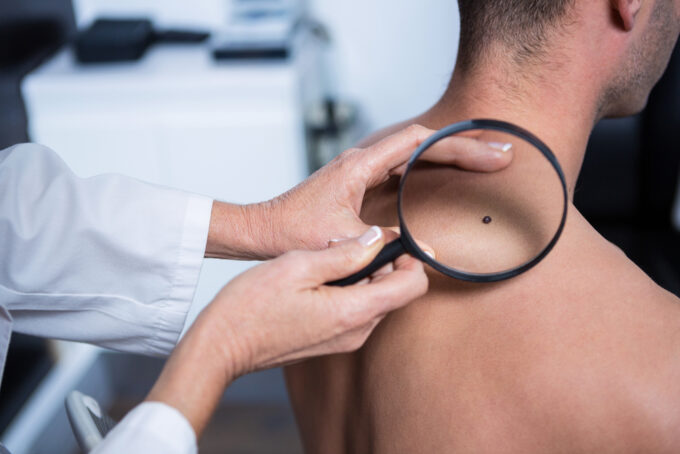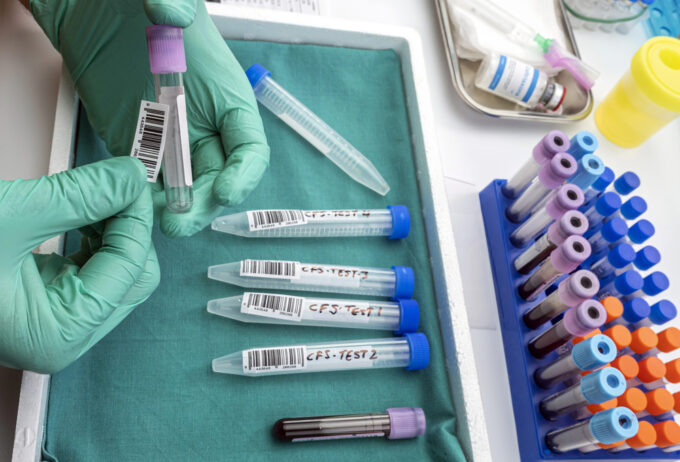Prevention of skin cancer
A Europe-wide skin cancer prevention initiative declares May as Skin Cancer Awareness Month. A few tips on how to protect yourself from it and how to recognize it.

With an area of about 1.8 square meters, the skin is the largest human organ. It fulfills various tasks: It regulates body temperature, activates the immune system, protects the body from water loss and from environmental influences such as cold, germs or UV rays. UV rays are, among other things, the most important trigger for all forms of skin cancer.
Types of skin cancer
The term skin cancer refers to various malignant skin tumors. The most common is white skin cancer, which includes basal cell carcinoma (basal cell carcinoma) and spinocellular carcinoma (spinalioma). Less common, but often more malignant, is black skin cancer (malignant melanoma).
Skin cancer can be dangerous if it metastasizes or grows into important organs. Therefore, the same applies to all types: With early detection and treatment, the chances of recovery from skin cancer are good.
How skin cancer develops
Skin cancer can basically occur on any part of the body. White skin cancer in particular often occurs in sun-exposed areas on the face such as the bridge of the nose, forehead, ears, lower lip, or on the neck, forearms, and the backs of the feet and hands. It's not just too much sun on the skin that can cause skin cancer. Especially chronic exposure to daylight (lifetime hours outside) triggers white skin cancer in older age.
Other risk factors for any or all forms of skin cancer include:
- Frequent visits to the solarium
- Many pigment spots / moles (black skin cancer)
- Light skin type
- Previous skin cancer or cases of skin cancer in the family
- Weakened immune system - for example, due to diseases such as HIV or drugs such as those administered after an organ transplant (spinocellular carcinoma).
- Contact with cancer-promoting substances such as tar (in cigarette smoke) or arsenic (basal cell carcinoma)
- Chronic skin inflammation as in "open leg" (spinocellular carcinoma)
- Rare hereditary diseases such as xeroderma pigmentosum or basal cell nevus syndrome
How do I recognize skin cancer?
To identify black skin cancer, you can use the ABCD rule as a guide:
- Asymmetry: skin cancer is usually irregularly shaped.
- Be boundary: skin cancer is irregularly bounded, that is, it has a fringed, fuzzy, or jagged edge.
- Color (color): When a healthy pigment spot develops into skin cancer, the coloration usually changes. A dark, uneven (blotchy) coloration is then typical. Sometimes skin cancer is also unusually colored, for example bluish, white or skin-colored.
- Dynamics: A healthy pigment spot remains more or less the same, while skin cancer changes in size, color, shape or thickness. The changes usually occur slowly.
Caution: Not all of these characteristics are always fulfilled in skin cancer! Regarding white skin cancer, crusts or wounds that do not heal within four weeks are suspicious.
Source: University Hospital Zurich
Online skin check
Send a photo of the affected skin area via the Web app of the University Hospital Zurich and fill out the short questionnaire. Within 24 hours on weekdays, interested parties will receive a reliable diagnosis from experts. Your data will be transmitted to us in encrypted form and treated confidentially. Good photo quality is essential for a reliable diagnosis.
More on the topic "Skin cancer doesn't just develop on the beach" (Info from Suva)









